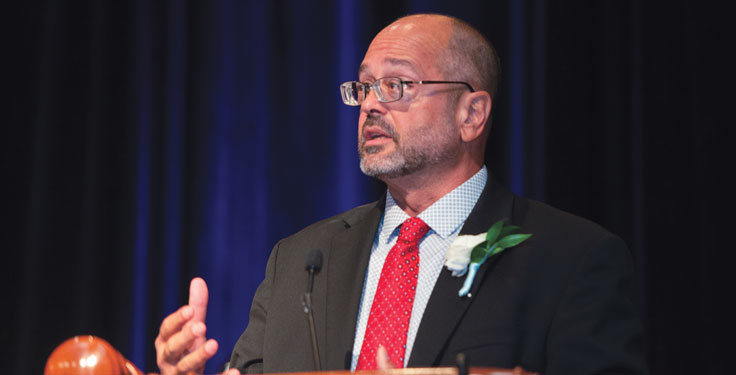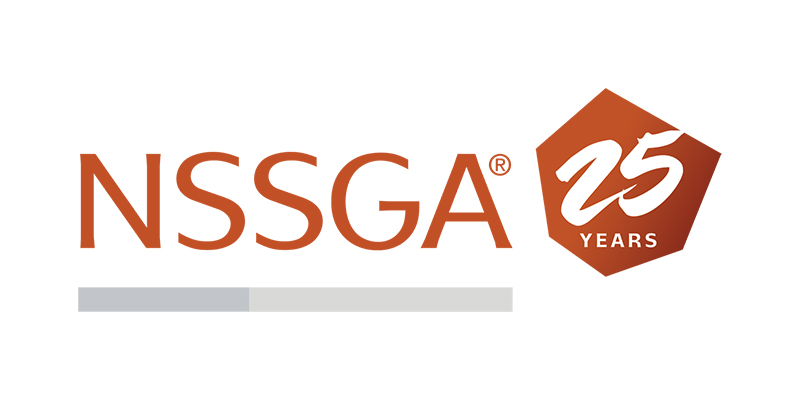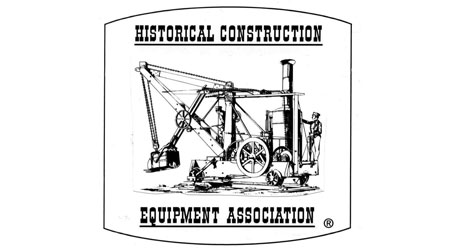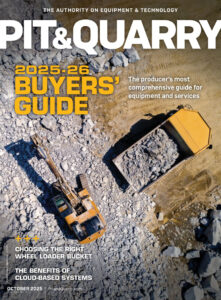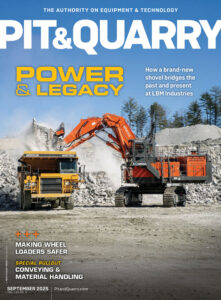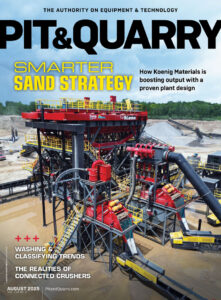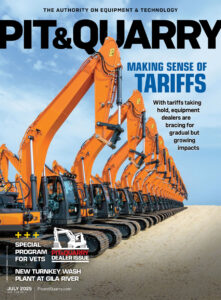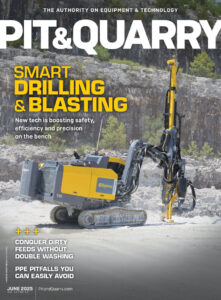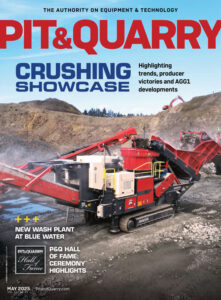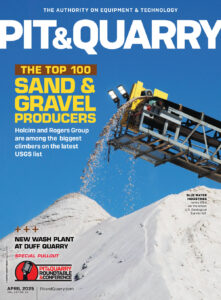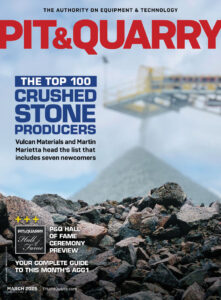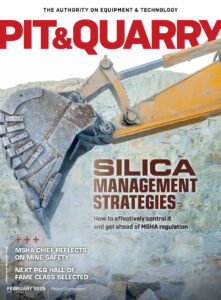Big Town Concrete CEO Rich Szecsy, whose company is based in the heart of the Dallas-Fort Worth market, took over as chair of the Texas Aggregates & Concrete Association (TACA) midway through this year. More recently, Szecsy sat down with P&Q to discuss what’s transpiring in the Lone Star State. The conversation touched on Texas’ tremendous growth and what’s likely ahead in the years to come. Szecsy also offered reflections on safety, the environment and the workforce – and how the construction materials industry can keep up with unprecedented demand across these key areas.
P&Q: You’ve had a long tenure in the industry: How would you describe the current moment in Texas construction materials? What makes this moment unique compared to others from throughout your career?
Szecsy: We are experiencing one of the most dynamic and energetic times I have ever seen in the industry. And this is for several reasons.
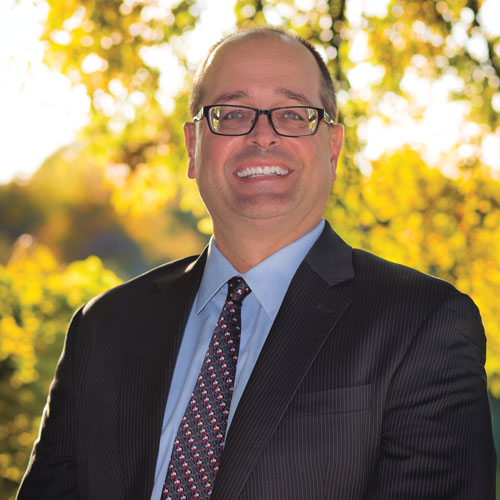
Firstly, Texas has 1,000 people per day moving to the state. The population growth requires more aggregates, concrete, cement and supporting materials and services every day. There is absolutely no sign of this population growth trend slowing down anytime soon.
Secondly, add to that the increase in technology – both on the material research and development front – with new materials being suggested for use, along with an increase in digital technology for communications, modeling and plant operations.
Finally, there is an increasing regulatory environment that we have to manage and navigate each year– even though the demand for the product is increasing at exponential levels.
P&Q: Texas is seeing unprecedented federal and state infrastructure funding. How is this impacting the demand for concrete and aggregates right now?
Szecsy: That demand is driven by the population. So that is a positive thing, and as mentioned earlier, shows no signs of abating. The money being allocated for use is large, but it is slow-moving and has to travel through multiple channels of bureaucracy before it is ever seen in a company’s P&L statement.
In fact, every dollar for infrastructure could do more if the municipal specifications were updated, used the latest available technologies and did not rely on the legacy of historical design criteria, which has become outdated and – in many cases – irrelevant.
Yes, this is a strong statement, but infrastructure dollars are tax dollars, and in the same manner that private business dollars need to be efficient, so do public infrastructure dollars.
As subject matter experts, the aggregate, concrete and cement industry truly do know the most efficient way to combine materials and should have a regular seat at the ‘infrastructure’ table to help with that efficiency.
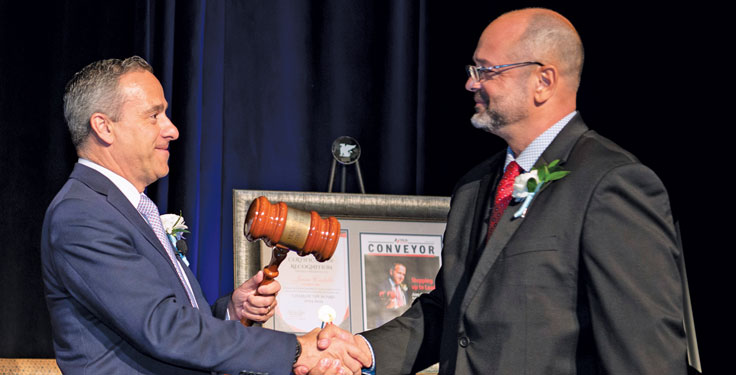
P&Q: From your position as TACA chairman, how are member companies preparing for the scale and pace of projects coming down the pipeline?
Szecsy: They prepare by having a dedicated approach and culture of safety. You cannot hire or retain good people without being safe. You cannot grow, raise capital or invest in assets without being safe. The nature of responding to growth and demand in our industry requires a solid foundation of safety.
The second part of this is through efficiency of resources. This is everything from locating and using aggregate reserves efficiently and ensuring regulatory compliance as required by permitting. Very importantly, they prepare by working hard to communicate to policymakers how regulatory and tax policy impacts the industry’s ability to respond to demand.
P&Q: What policy or regulatory developments at the state level are having the biggest influence on your sector.
Szecsy: The ability to continue to obtain permits for operating facilities. A clear, consistent and predictable permit environment is necessary to respond to growth. A business cannot attempt to obtain a permit where the regulatory environment is constantly moving or variable.
We need to ensure the continued reliance on good and sound science to support regulatory policy. There are always going to be sectors of the community that do not want to see operations permitted. When that opposition is mounted and incorrect claims of environmental harm, damage or health impacts are made, the use of sound science and data collection is critical to establishing the correct permit limits for the protectiveness of the community.
This underscores the need for the fundamental and basic education of policymakers. Everyone uses aggregate, concrete and cement in their daily lives. But very, very few people understand the basics of where these materials come from or what it takes to produce them.
The acceptance and allowance by policymakers to welcome industry subject matter experts into the policy and legislative discussions are so very important. We are seeing more of this now than we ever have in the past.
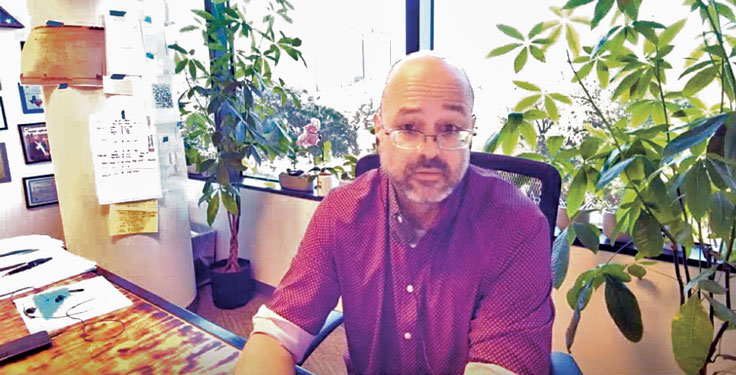
P&Q: How do you see the construction materials market evolving in Texas over the next five to 10 years? How about in the next decade? What factors are shaping your view?
Szecsy: The demand for the products will continue to increase. Period.
As the population grows, so does the demand. This is a linear function and shows absolutely no sign of slowing. So, this means we can predict how much volume we will need on an annual basis and be relatively confident in the prediction for what we will need. This translates into employees, trucks and plants.
It’s extraordinary to think that in just two decades, Texas will grow by nearly 7 million people – from 31.8 million in 2025 to more than 38.6 million in 2045. To meet that demand, we will need to essentially build the equivalent of Texas’ five largest cities – Houston, San Antonio, Dallas, Austin and Fort Worth – all over again. That kind of growth simply isn’t possible without the strength and dedication of our industry.
Still, there will be an increase in the opposition to new permits, the number of vehicles on the road, weight limits for the road and an increase in regulatory constraints. The simple answer is that ‘today is the easiest day to be in this industry; tomorrow gets more difficult.’
P&Q: Sustainability and decarbonization are major talking points across construction. What steps are companies like Big Town Concrete taking to meet current environmental expectations?
Szecsy: The discussion surrounding resource conservation, sustainability and resiliency are not just taglines in brochures. They are going to be part of the design and building decisions going forward.
We try to work with specifiers about the efficiency of concrete mix designs and the conservation of use of available materials. ‘Decarbonization’ is not a binary solution or discussion. We can and do achieve incremental improvements with practical approaches.
What we get hampered by are mandates, prohibitions or material specification limits. Rather than allowing us – as subject matter experts – to work backward from the answer, we must go through an iterative process by which the mandates or prohibitions to arrive at a ‘decarbonized’ level create a higher cost for the owner. Then we end up right back where we should have started, with practical and reasonable designs.
P&Q: How do you balance environmental responsibility with the operational realities of meeting soaring demand in a fast-growing state?
Szecsy: By being a community steward and a conservationist. We know we need to use natural resources to supply the demand that exists today. There is no way around that.
So, when we use those natural resources, we need to do that in the most efficient manner possible. This includes operating within the bounds of the permits that have been issued and making sure we are connected to the very communities where we operate by being open to inspections, hiring locally and engaging with the local municipalities regarding the efficiency of their design and specifications.
P&Q: Switching gears a bit, but how are automation and digitalization affecting gaps in the workforce?
Szecsy: This is a double-edged sword for us.
On one side, we have more data for decision making than we have ever had before – and we are getting it almost in real time. This means head count can be potentially lowered when it comes to processing data, whether in the back office or at the operational level.
The downside is there is less knowledge about what the data means. We lose the ground level knowledge and instructional experience that took 40 years to gain by experience and relationships.
Does this mean we are going to slow down the automation and digitalization? Absolutely not. We just need to be cognizant of what we are bypassing and possibly leaving behind as we install that technology.
Related: Episode 47: Texas at full throttle with TACA’s Rich Szecsy

